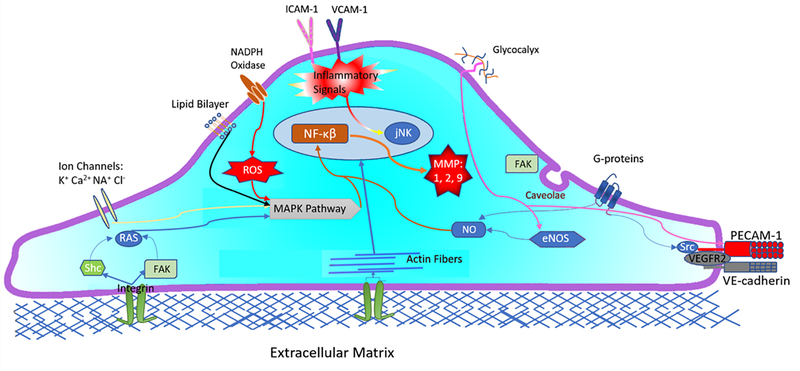Figure 2:
Endothelial cell mechanoreceptors and their impact on select cellular signal pathways. Flow stressors impact ion channels (K+, Ca2+, Na+, Cl−), G-proteins, caveolae, nicotinamide adenine dinucleotide phosphate (NADPH) oxidase, lipid bilayer, and glycocalyx. Signals are also transmitted from the cytoskeleton to activated integrins, platelet endothelial cell adhesion molecule-1 (PECAM-1), VE-cadherin and VEGFR2. Activated integrins phosphorylate non-receptor tyrosine kinases FAK and Shc which trigger Ras family GTPase. Ras triggers mitogen-activated protein kinases (MAPKs). MAPKs activation is also signaled from reactive oxygen species (ROS) production from NADPH oxidase and is modulated by K+ Cl− from ion channels. Cell-cell PECAM-1, VE-Cadherin, VEGRF2 complex and glycocalyx regulate eNOS and NO expression. NO and MAPK pathways phosphorize transcription factors such as nuclear factor-kappa β (NF-κB) and JNK. NF-κB is needed for metalloproteinase secretion (MMP-1,2,9) which increases cellular inflammation (VCAM-1 and ICAM-1 expression) and matrix degeneration. Increased cellular inflammation activates JNK expression, triggering cellular apoptosis.

